 by our College Data Analytics Team
by our College Data Analytics TeamVLS total enrollment is approximately 624 students.
See racial/ethnic breakdown for all students.
Male/Female Breakdown of Graduate Students
About 61% of full-time grad students are women, and 39% men.
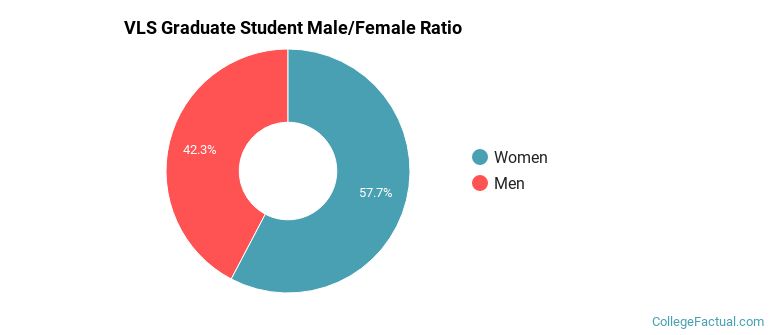
For the gender breakdown for all students, go here.
VLS Racial-Ethnic Breakdown of Graduate Students
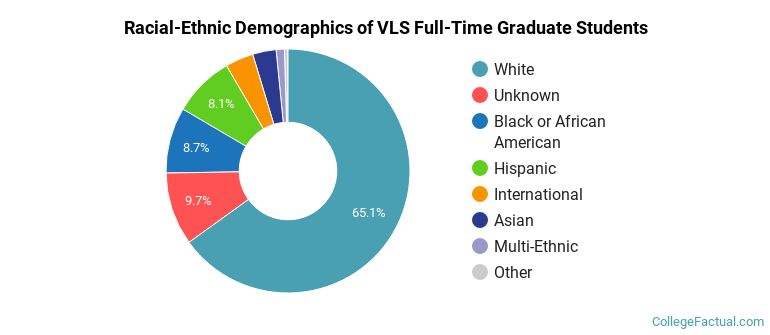
| Race/Ethnicity | Number |
|---|---|
| White | 374 |
| Hispanic | 59 |
| Unknown | 55 |
| Black or African American | 51 |
| Asian | 19 |
| International | 6 |
| Multi-Ethnic | 4 |
| Native Hawaiian or Pacific Islander | 2 |
See racial/ethnic breakdown for all students.
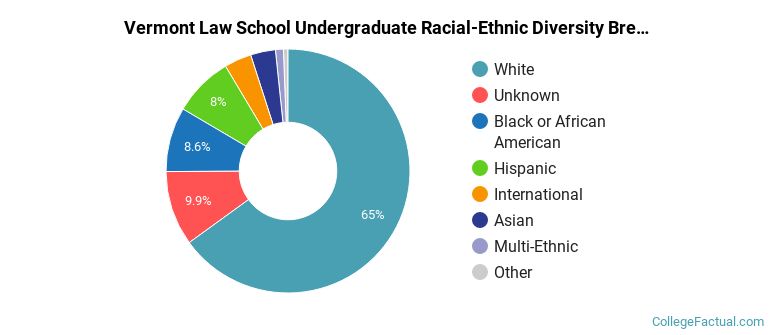
| Race/Ethnicity | Number |
|---|---|
| White | 405 |
| Unknown | 65 |
| Hispanic | 61 |
| Black or African American | 55 |
| Asian | 20 |
| International | 10 |
| Multi-Ethnic | 4 |
| Native Hawaiian or Pacific Islander | 2 |
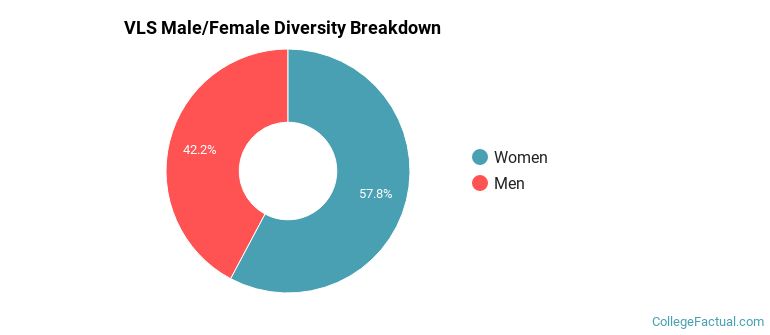
There are approximately 381 female students and 243 male students at VLS.
A traditional college student is defined as being between the ages of 18-21. At VLS, 0.32% of students fall into that category, compared to the national average of 60%.
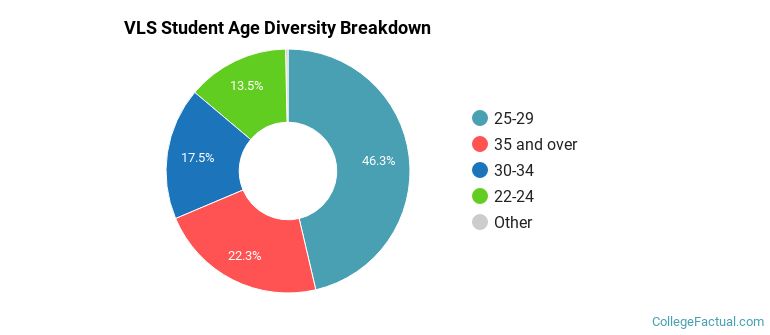
| Student Age Group | Amount |
|---|---|
| 25-29 | 291 |
| 35 and over | 140 |
| 30-34 | 110 |
| 22-24 | 85 |
| 20-21 | 2 |
| 18-19 | 0 |
| Under 18 | 0 |
Footnotes
*The racial-ethnic minorities count is calculated by taking the total number of students and subtracting white students, international students, and students whose race/ethnicity was unknown. This number is then divided by the total number of students at the school to obtain the racial-ethnic minorities percentage.
References
Department of Homeland Security Citizenship and Immigration Services
Learn more about how College Factual creates their Diversity Rankings.